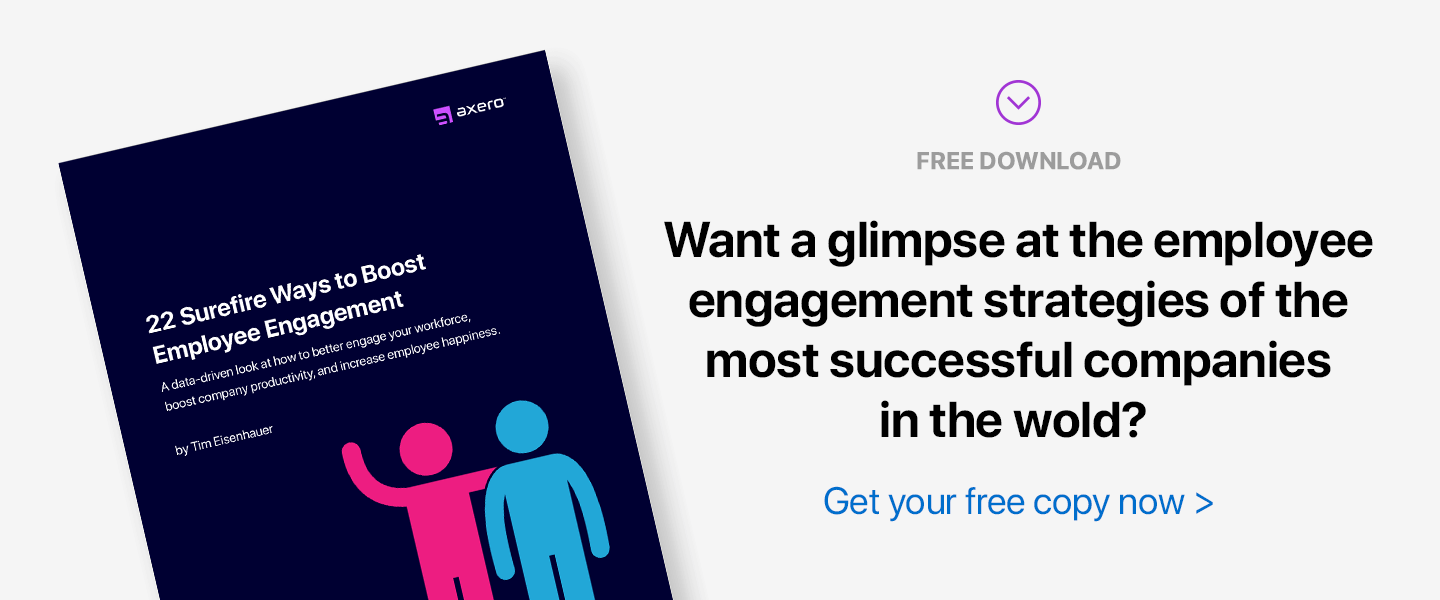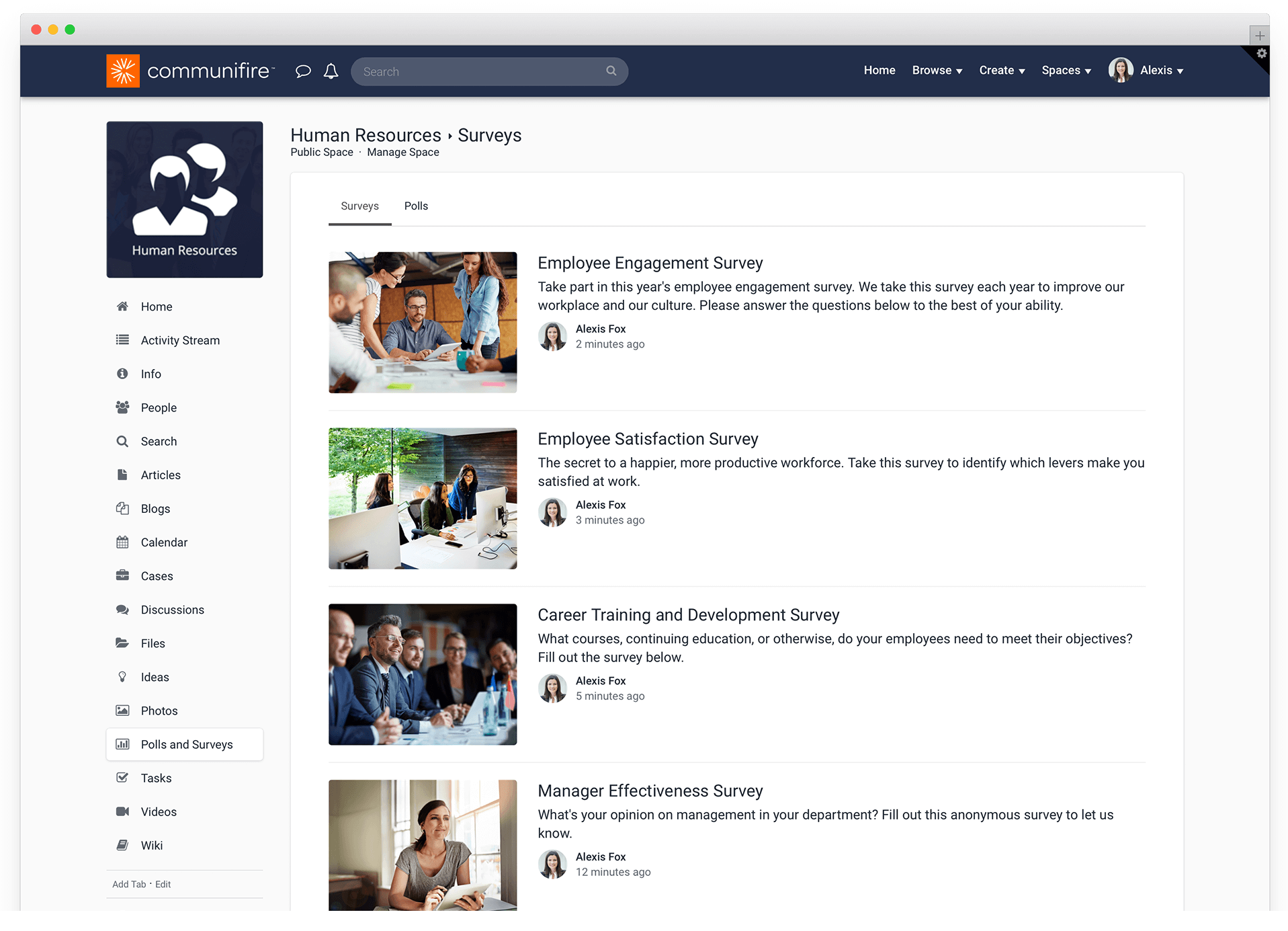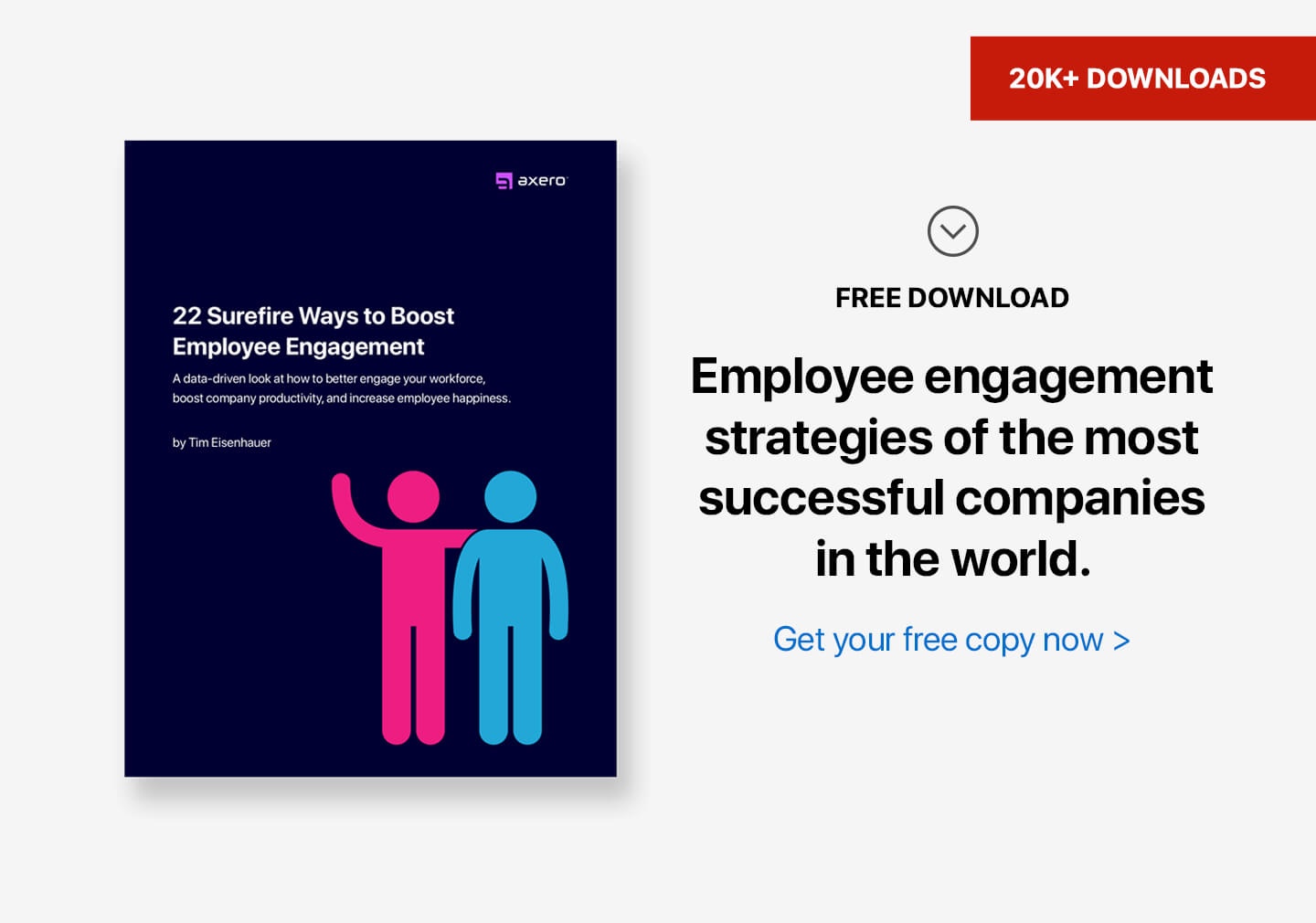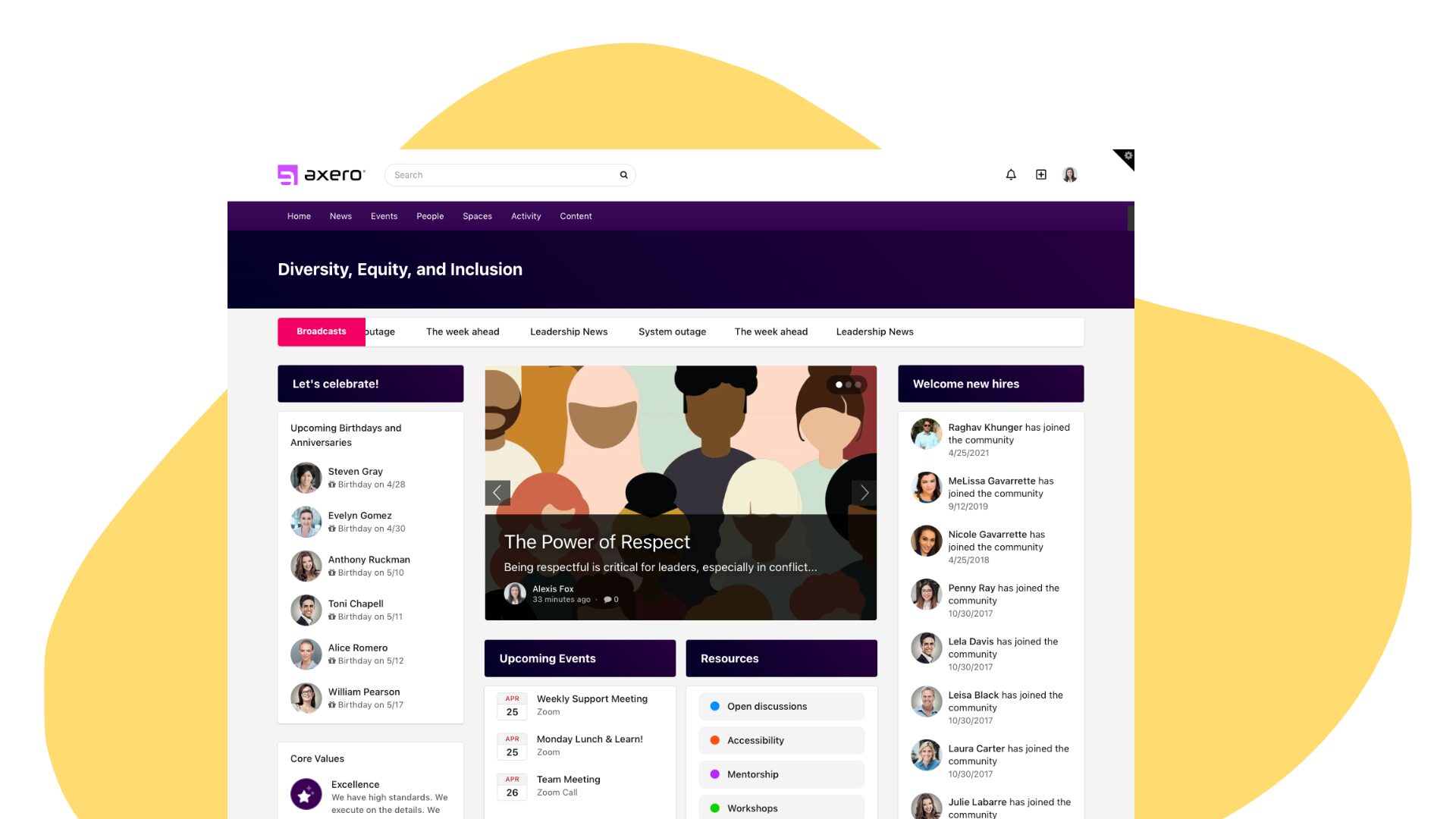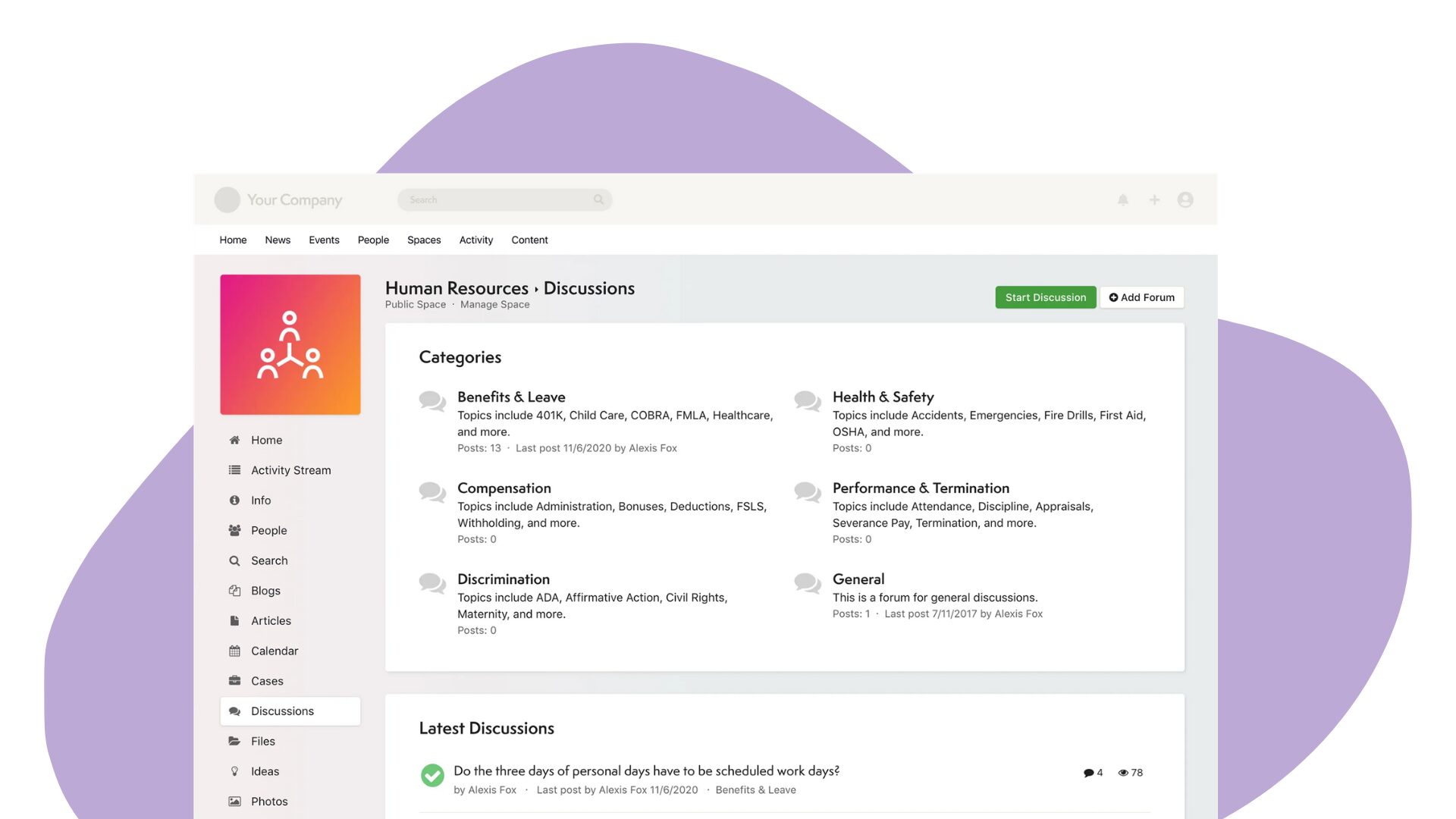If there is a common struggle that every manager, director, leadership team, and organization contends with, it’s figuring out how to motivate employees and keep them engaged with their work.
Prioritizing a motivated workforce is crucially important. In most cases, an unmotivated staff will lead to high turnover and lower productivity. Unfortunately, studies indicate that less than a third of US workers feel motivated by their jobs. This means a lot of employees are not engaged in their jobs, which makes the topic of how to motivate employees, as a manager, one that should be taken seriously.
So… how do you shift the morale of your workforce to one that is more engaged, positive, and motivated?
Many professionals overthink how to motivate employees, which causes the goal to get lost in the mission. The truth is, motivating employees doesn’t have to be overly complicated and it doesn’t have to cost a lot of money, either. It all boils down to communication, the behaviors you exhibit, and how you treat your employees. Leveraging the right tools that can reach your employees and bring them closer to the workplace culture will go a long way, too.
If you don’t know where to start, do not worry. In this post, we’ll review strategies and tips about how to motivate employees, different tools you can use, and how today’s most engaged companies keep their employees motivated.
9 tips about how to motivate employees.
The vast majority of upper management focused on motivating employees have the best intentions. They want to get the most out of their workforce and they want people to want to be there. But when push comes to shove, it’s not enough for managers to preach these ideas and call it a day. It is leadership’s responsibility to be truly committed to make impactful changes. Let’s start with these 9 practical tips about how to motivate employees in your organization.
1. Be positive. Intimidation won’t increase employee motivation and engagement.
Some CEOs and managers use intimidation tactics to motivate employees. But more often than not, this depletes the energy employees need to produce their best work and instead instills fear, anxiety, and employee disengagement.
Intimidation may seem like a quick and effective way to get employees more engaged and motivated, but in reality, it won’t do you any favors. The fact is, today’s employees understand that the job market is a difficult landscape and they don’t need the threat of job security hanging over their heads.
Instead of trying to motivate employees with fear, reinforce the positive behaviors and wins that you see to encourage and inspire everyone. Highlight what’s working, listen to your teams’ challenges, and show your employees ideal examples of what you want to see.
After all, your employees don’t want to feel as if they’re working for a tyrant, and there’s no reason to give off that kind of impression. Your employees want to know that they’re working in a safe space and have the support to successfully do their jobs. Leave the anger and frustration at home because there are more effective ways to motivate employees.
2. Get to the root of the problem. Happy employees are not always motivated employees.
Who doesn’t want to be part of a happy workplace?
It’s true that a happy staff will generally create an enjoyable environment to work in, but employee happiness does not always mean your teams are engaged and motivated. In fact, managers often make the mistake of thinking that employee engagement, employee motivation, and employee happiness are the same, when really, they’re separate components that work in tandem with each another.
There are countless initiatives that you can do to make your employees happier. Raises, for example, may improve an employee’s happiness for a short period of time, but it won’t get to the root of the problem.
Employee motivation is directly tied to productivity and commitment to an organization. You need your employees to feel valued and appreciated so that they value their contributions to the organization. Happiness is a feeling and motivation is an action—it’s important to decipher between the two.
If you assume that your employees are motivated just because they’re happy, it may be worth your while to take a closer look at the reality of the situation.
3. There are better ways to motivate employees than with salary increases and “employee of the month” programs.
People are motivated by money, but how much of a long term impact will it have on morale and motivation? No one is ever going to turn down a raise, but that doesn’t mean it’s going to motivate your employees.
As a quick employee motivation technique, some managers offer higher salaries to encourage more effort. More times than not, raises prove to be a bandaid to a deeper issue.
For raises to be an effective form of employee motivation, they need to be rewarded for stellar contributions. If rewarded for lackluster performance, raises will have a short term effect and the habits you were trying to correct will likely return. Apply bonuses and pay increases for contributions that deserve it. This, coupled with paid time off and gifts sprinkled throughout the year, will have a stronger impact on motivation.
“Employee of the Month” programs are another motivation technique that many are familiar with. While it’s always good to recognize achievements, you run the risk of making others feel unappreciated by highlighting one employee and not your team as a whole. Because of this, you will need other employee motivation ideas in play to ensure your entire team does not feel left out.
4. Have managers focus on employees who really need the attention. Others will thrive on their own.
Your managerial staff is essential to leading your employees to success and improving the flow of your business.
On occasion, employees might not be on the same page with each other, which can create tension that impacts employee motivation.
More often than not, managers place an equal focus on all employees because they believe it is the fairest way to divide their time … which is an understandable assumption. However, different people need different things to thrive. Certain employees will require more attention and touch points than others to be truly engaged and motivated in their work.
In order to execute an effective management strategy, it’s important to keep a close eye on your employees and identify those who need more support. Extend your energy towards them, and know which employees are already motivated and do not need an extra push.
However, things can change on a dime, which is why it’s important to always stay in touch with what’s going on within your organization. There are a lot of factors that impact employee motivation (or lack thereof) that managers simply do not have any control over. Leadership methods play a major role in whether or not employees are properly motivated. So can situations happening outside the office and internal conflicts between workers.
While it’s important for your employees to be able to problem solve with each other, situations that involve tension should always be addressed by management because it is by far the quickest way to alleviate problems.
Motivating employees is a joint-effort that requires work on the part of both employees and managers, so focus your attention on who needs it, and check in often.
5. Surveys and performance reviews are not the answer to improve employee motivation and engagement.
It’s not always easy to assess the levels of employee motivation in an organization.
Especially for large companies, many turn to employee engagement surveys, because they appear to be the quickest and most direct way to gauge motivation. But the truth is, if your employees are already unmotivated and disengaged, chances are they will not thoughtfully respond to an impersonal and mass-distributed survey.
Instead, put effort into addressing each individual separately, determining their needs, and helping them find success in their position.
However, this does not mean you should be giving them performance reviews every month or quarter either.
The dreaded “performance review” is something that affects employees in all industries, and nobody looks forward to it. Managers often view performance reviews as an opportunity to bring up problems associated with employee motivation, and while there are forward-thinking ways to do so, things are most commonly taken too far.
Rather than smoothly incorporating a conversation about the issue into a review, some managers use the entire time to berate their employees over their performance and engagement.
As with intimidation and surveys, performance reviews in their classic form are ineffective at improving employee motivation. You’re better off creating a more tailored, personal approach and addressing the issue in a direct manner.
6. Encourage collaboration and embrace technology to help motivate employees.
As many managers find out over time, some employees thrive when they work by themselves.
The majority of the time, however, collaboration is an effective tool for saving money, time, and energy … not to mention a great way to motivate employees.
It’s also becoming more and more important in the modern business landscape, especially in companies that employ remote workers, in which case social intranet software can be a game-changer.
Social intranet software is one of the most popular business communication tools used today, and the benefits extend to employee motivation.
When employees collaborate via a virtual platform, they don’t have the option to be disengaged; their performance will suffer and everyone will notice … giving management the opportunity to address any issues or problems.
Handling your business processes with online collaboration tools can improve many aspects of your organization, with employee engagement and motivation being at the top of the list.
If you have employees on staff that are already completely engaged in their work, there’s no reason why they can’t handle certain tasks on their own. Even these individuals will benefit from collaborating with others though, and those who are suffering from a lack of motivation can gain quite a bit from being part of an active team.
7. Handle your employee motivation concerns in-house … not with an outside HR firm.
When problems related to employee motivation become a large issue, it can be tempting to enlist outside help as quickly as possible.
There are third-party HR firms that handle issues related to engagement and motivation, and many of them are good at what they do. With that said, you’re missing a huge opportunity for growth in your organization by hiring someone else to take care of the problem, and if your company is small enough where you interact with your employees daily, you may be setting yourself up for discomfort.
Falling motivation and engagement levels should be identified as a sign that your managerial staff has some work to do to get everyone on the same page again.
An HR firm may seem like a quick solution, but it won’t do your organization many favors long-term.
8. Employee motivation extends well beyond the hiring and onboarding process.
A lot of people think the key to ensuring proper employee motivation is hiring individuals who are already fully-engaged and motivated in the first place.
Adding a new employee into your team can be an exciting experience. New minds can bring a lot to the table, and there’s no telling what ideas may come about that might push your business forward.
However, it is by no means a sure bet.
When managers put all of their focus on the hiring process, they often expect that their “engaged” and “motivated” new employees are good to go, requiring no coaching or enrichment. It’s assumed that new employees won’t suffer from engagement and motivational problems, simply because they’re so new to the team that they can’t possibly lose focus. If you embrace this philosophy, there’s a good chance your staff’s engagement levels will steadily decline over time.
What often gets overlooked is that employee engagement and motivation levels can easily waver during the onboarding process, too.
The onboarding process can be stressful and difficult for some, often leading new employees to feel overwhelmed. Managerial staff should always keep a close eye on new employees, regardless of how well-adjusted they seem to be.
Hiring well is a necessity, but it doesn’t take the place of great management.
9. Don’t hesitate. There are cheap and easy ways to motivate employees and increase engagement.
There’s no getting around the importance of saving money for your organization. In an age where sticking to a budget is more important than ever, many business owners and managers look to how they can cut costs … and some are hesitant to improve employee motivation because they feel it will be a costly venture. Fortunately, this is not the case.
When it comes to improving employee engagement and motivation, the most effective tool isn’t money, but time. Sitting down with an employee and discussing the issue, while keeping an open mind, can make all the difference in the world, as can helping to improve your office environment as a whole.
Money can certainly help in these situations, but it’s not the end all, be all. You can also check out another post, The Ultimate Cheat Sheet on Employee Engagement Ideas Your Team Will Love, for 49 employee engagement ideas you can use today.
5 tools to improve employee motivation and performance.
Employee motivation and performance can make or break a business, especially when it comes to sales, customer service, and innovation.
As anyone in a management position already knows, even the best employees succumb to poor performance on occasion, and it can be difficult to figure out how to motivate them and get morale on an upswing.
There comes a point in every manager’s career when it’s necessary to focus on improving employee performance, engagement, and motivation. While it’s not always easy to know where to start, those in leadership roles can find solace in a number of different employee engagement tools, each of which can be used to help increase employee motivation and performance.
Start with the following five tools, and don’t hesitate to expand on the list as you become more comfortable working with your employees.
1. Intranet software.
There are countless tools that can be used to help your employees perform at a more efficient level, but none compare to intranet software. As mentioned in our practical advice, collaboration is one of the best ways for employees to become re-engaged in their work, which inevitably leads to much better performance. With the right intranet software, you and your employees can collaborate at any time, even if you’re located around the world.
Intranet software brings together everything you need to manage day-to-day processes, including shared calendars, a document management system, blogging and wiki platforms, and more. Once implemented, you can create private spaces for each team in your organization where employees can share information and ideas. As intranet software can also be a huge time-saver, you’ll be saving your organization a great deal of money, all the while taking employee motivation and performance to an entirely new level.
2. Social media.
We live in the age of social media, and it’s an exciting time for businesses. Companies that want to remain relevant in today’s world need to maintain accounts on all of the major social media networks, including Facebook and Twitter. This is a great aspect of many companies’ employee engagement strategy. Sometimes, however, managing a number of pages at once can be a difficult task, which is why it can be helpful to divide responsibilities between your staff so that you don’t have to handle everything yourself.
Give them a task they don’t know how to do, and you may just give them a challenge to overcome. And when they overcome such a challenge, they’re more likely to feel ownership over the project.
When employees are tasked with managing social media accounts (or writing posts, for example), they could feel more connected to the organization they work for. Employees need to be engaged and focused in order to properly manage an account, and the pressure that comes along with this is sometimes just what it takes to kick performance and motivation up a notch. As long as you don’t task staff members with more than they can handle, they’ll no doubt benefit from having a hand in your organization’s social media presence, whether it be through managing accounts, blogging, or otherwise.
Learn more about the benefits of social in the next section of this post, Lessons from the Top Most Socially Engaged Companies.
3. Mobile apps.
These days, smartphones and tablets are replacing laptops and PCs. Users who already have these devices in their pockets find it easier to check-in with with work or quickly browse the web instead of having to set up a laptop or sit down to a PC … and the move towards portability isn’t looking to slow down anytime soon. Keeping this in mind, it’s essential for forward-thinking businesses to embrace mobile platforms, and the sooner it can happen, the better.
In order for your employees to find true success at work, they need to be connected to the office while they’re on the go. Designing or purchasing a mobile intranet app for Android and iOS that your staff can use to connect with your organization while on the road or at home is an excellent way to keep employee motivation and engagement levels high … not to mention increase productivity and save money.
4. Simple surveys.
As previously stated in this post, I said that surveys are not the answer to better employee motivation and engagement. And I stand by that.
However, surveys can be somewhat of a double-edged sword. On one hand, they can be great tools to gauge an employee’s happiness, motivation, and level of engagement, which can be valuable information. On the other hand, surveys can be annoying, alienating, and generally not something most employees want to spend time filling-out—especially when staff is unmotivated. It’s important to put care into your surveys if you are considering using them.
Consider administering surveys on days that are relatively slow, and keep them as short as possible. Ask questions that are to-the-point, but do so in a way that isn’t intrusive or uncomfortable. Perhaps most importantly, make sure you actually use the data you acquire. There’s nothing worse than taking the time to fill out a survey, only to find out that the information is left to collect dust on someone’s desk.
5. Employee engagement activities.
While there are a number of tangible tools that can be used to improve employee motivation and performance, one of the most effective is not something that can be touched or “logged-into,” but instead comes in the form of employee engagement activities. Activities are perfect for helping take the stress out of the day, and they can be extremely cost-effective as well. Any business can embrace activities that help improve engagement and motivation, regardless of how large or small it may be.
To get the most out of employee engagement activities, you’ll want to take the culture of your business into heavy consideration. A happy hour at the end of the week can be enough to keep stress at bay, as can a company outing or in-office team-building exercises. Try as many different activity ideas that you can come up with, just as long as you don’t let them overwhelm your staff.
Lessons from the top most socially engaged companies.
As mentioned in point #2, we’ll now take a look at the benefits social media can have on employee motivation and engagement in your organization.
In a social economy, businesses that are aiming to go beyond employee engagement and invest in community and relationships are gaining affinity and attention.
These companies have come to the realization that engaged and motivated workers are the lifeblood of their organizations.
Relationship economics is the value of a company’s social media engagement. It is an essential component to having a competitive advantage. It begins with employees and the outcome is real-world business results.
Why engagement and employee motivation is low.
According to a Gallup survey, only 13% of employees are engaged.
63% are not.
Despite the widespread adoption of social media platforms, there is very little social engagement in the workplace. Part of the reason for this has to do with the value businesses place on employee relationships.
When compared with socially engaged companies, those that have little engagement do not invest in the people at the company, their experiences, and their aspirations. Not surprisingly, these companies tend to be less profitable, have higher turnover, and have less support among their employees.
Executives at these less socially engaged companies were also found to be way less socially active compared to the socially engaged companies. Engagement metrics showed significant differences with over 50% of executives in socially engaged companies being more likely to be socially active and to motivate employees to do the same.
The top socially engaged companies.
A recent study by LinkedIn and Altimeter Group looked at the top 25 most socially engaged companies and how such engagement contributed to their successes. Top on the list was Google, Adobe, The Wall Street Journal, Salesforce, VMWare, Facebook, HAYS, and Michael Page International.
Down the list included companies like LinkedIn, RedHat, Teradata, MasterCard, NetApp, Juniper, Brunel, Yahoo!, Visa, among others. By studying these companies, we can learn a lot from how they have benefited by investing in employee engagement programs.
Lessons learned.
According to Angela Ahrendts, Senior Vice President of Retail at Apple, “Everyone talks about building a relationship with your customer. I think you build one with your employees first.”
We can learn a lot of lessons from building relationships with employees from these companies.
1. Executives lead the way.
Executives that understand their competitive landscape become a greater asset to the company. Executives at the top companies aren’t just going through the motions of social, they are fully engaged with audiences.
Jeff Weiner, the CEO of LinkedIn, has a Klout score of 82 and is one of the most thoughtful leadership voices in the valley focused on tech, social media, and leadership. Eric Schmidt, executive chairman and former CEO of Google, has a Klout score of 85 and posts interesting tweets about technology, the future of digital, and leadership lessons from his years of experience.
Marissa Mayer, CEO of Yahoo!, makes good use of images and video from her Tumblr blog and tweets a lot of helpful links. Richard Branson has a Klout score of 91 and offers inspiring stories and quotations from his charitable initiatives and business ventures across his social channels.
When top executives are active on social media, it shows the company is innovative, gives the company a personality, and motivates employees to do the same. The result is the company gains a more competitive edge.
2. Employees feel empowered, inspired, and motivated.
Employees at socially engaged companies like Google and Adobe are 27% more optimistic about their company’s future, and 15% more likely to feel connected to co-workers. As a result, they are 20% more likely to feel inspired, motivated, and stay at their companies.
When employees are socially engaged, they are more likely to become brand ambassadors advocating the take up of their company products and services. This does not happen quickly. With a clear strategy and focus, however, it is possible to get employees to feel empowered over time and help the company gain a significant competitive advantage.
3. Social engagement stimulates competition.
Social engagement has a real bottom line.
According to the above study, 40% of the top socially engaged companies are more likely to be perceived as more competitive and 58% more likely to attract top talent. As a result, they are 57% more likely to get increased sales leads.
Social engagement is a great way to drive greater lead generation, cultivate innovation, and yield top talent. Gartner, which has a Klout score of 88 frequently posts valuable statistics across industries and even has a Gartner jobs Twitter account which helps the company attract top talent.
Salesforce, with a Klout score of 88, regularly publishes and tweets up-to-date information on announcements and innovation which helps build enthusiasm for its products and show its innovative edge to customers and potential employees.
Everywhere you look, employees and customers want socially active leaders and companies. The value of social relationships is on the rise and companies that understand this paradigm shift will remain at the top and continue to influence market trends moving forward.
Wrapping up …
Figuring out how to motivate employees is an important focal point of your business, so make sure you use sound methods that won’t work against what you’re trying to achieve. All of the above examples will definitely help ensure that your efforts are rewarded.
Once you start applying the tips above, along with employee engagement and motivation tools, you’ll quickly learn just how much of a difference you can make when motivating employees. Maintain a clear focus, and your efforts will surely pay off.




